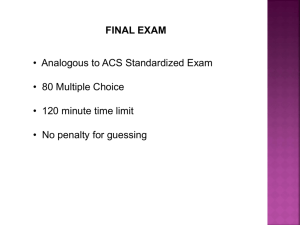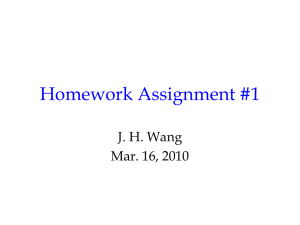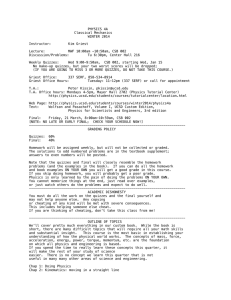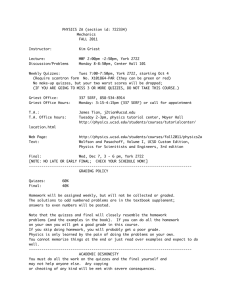Problem set 8, due December 1
advertisement
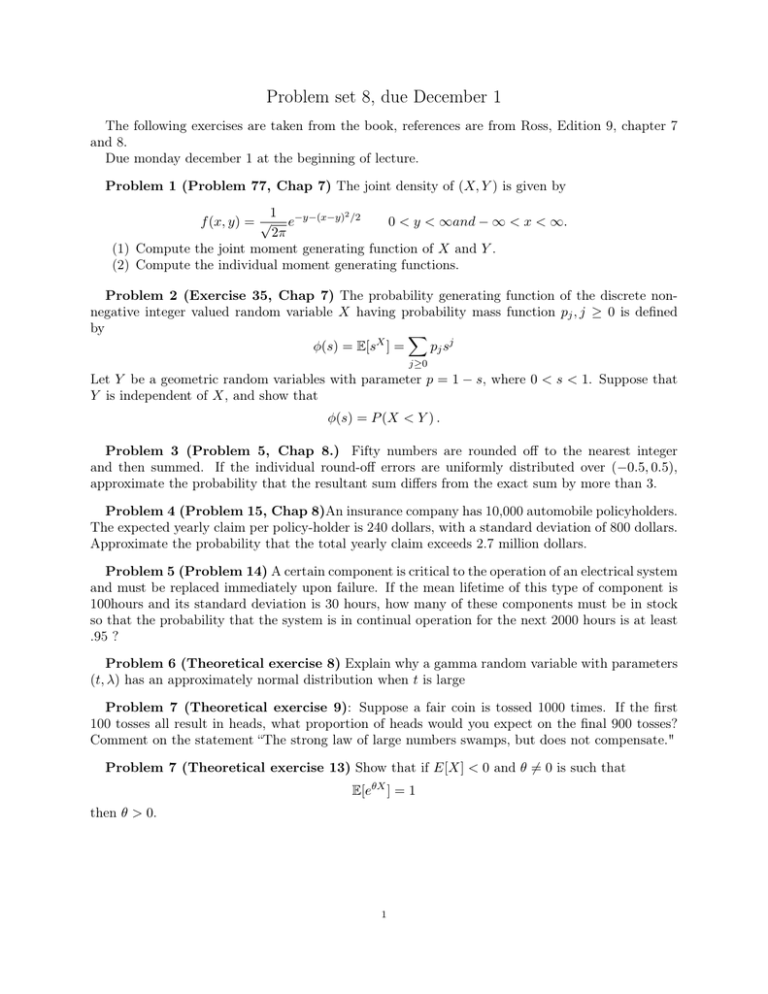
Problem set 8, due December 1 The following exercises are taken from the book, references are from Ross, Edition 9, chapter 7 and 8. Due monday december 1 at the beginning of lecture. Problem 1 (Problem 77, Chap 7) The joint density of (X, Y ) is given by 1 2 0 < y < ∞and − ∞ < x < ∞. f (x, y) = √ e−y−(x−y) /2 2π (1) Compute the joint moment generating function of X and Y . (2) Compute the individual moment generating functions. Problem 2 (Exercise 35, Chap 7) The probability generating function of the discrete nonnegative integer valued random variable X having probability mass function pj , j ≥ 0 is defined by X φ(s) = E[sX ] = pj s j j≥0 Let Y be a geometric random variables with parameter p = 1 − s, where 0 < s < 1. Suppose that Y is independent of X, and show that φ(s) = P (X < Y ) . Problem 3 (Problem 5, Chap 8.) Fifty numbers are rounded off to the nearest integer and then summed. If the individual round-off errors are uniformly distributed over (−0.5, 0.5), approximate the probability that the resultant sum differs from the exact sum by more than 3. Problem 4 (Problem 15, Chap 8)An insurance company has 10,000 automobile policyholders. The expected yearly claim per policy-holder is 240 dollars, with a standard deviation of 800 dollars. Approximate the probability that the total yearly claim exceeds 2.7 million dollars. Problem 5 (Problem 14) A certain component is critical to the operation of an electrical system and must be replaced immediately upon failure. If the mean lifetime of this type of component is 100hours and its standard deviation is 30 hours, how many of these components must be in stock so that the probability that the system is in continual operation for the next 2000 hours is at least .95 ? Problem 6 (Theoretical exercise 8) Explain why a gamma random variable with parameters (t, λ) has an approximately normal distribution when t is large Problem 7 (Theoretical exercise 9): Suppose a fair coin is tossed 1000 times. If the first 100 tosses all result in heads, what proportion of heads would you expect on the final 900 tosses? Comment on the statement “The strong law of large numbers swamps, but does not compensate." Problem 7 (Theoretical exercise 13) Show that if E[X] < 0 and θ 6= 0 is such that E[eθX ] = 1 then θ > 0. 1




